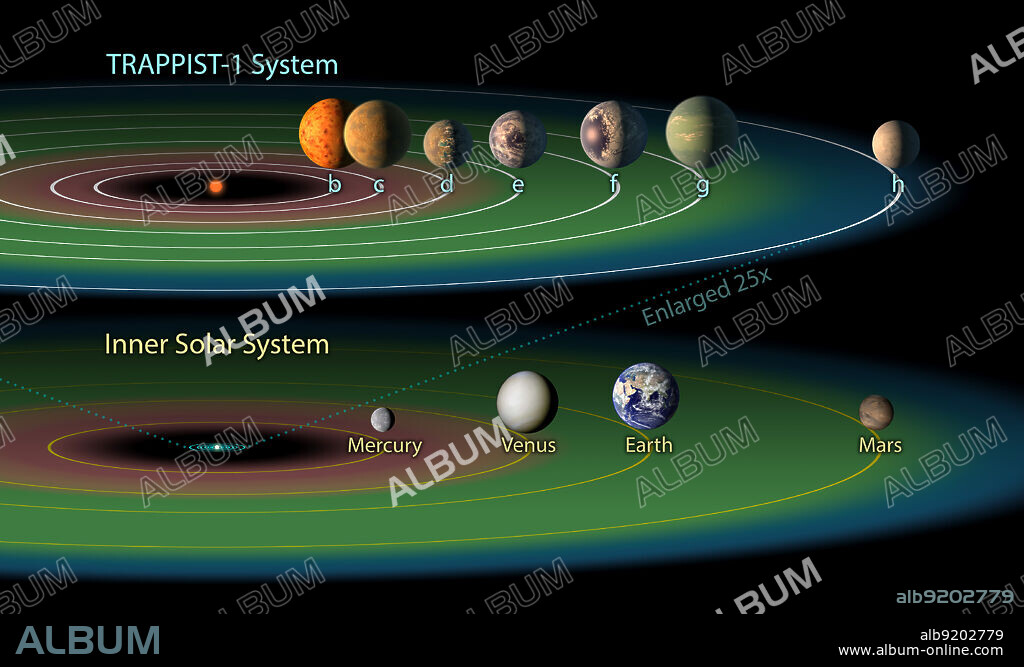alb9202779
TRAPPIST-1 Habitable Zone

|
Añadir a otro lightbox |
|
Añadir a otro lightbox |



¿Ya tienes cuenta? Iniciar sesión
¿No tienes cuenta? Regístrate
Compra esta imagen

Título:
TRAPPIST-1 Habitable Zone
Descripción:
Ver traducción automática
The TRAPPIST-1 system contains a total of seven planets, all around the size of Earth. Three of them -- TRAPPIST-1e, f and g -- dwell in their star's so-called 'habitable zone'. The habitable zone, or Goldilocks zone, is a band around every star (shown here in green) where astronomers have calculated that temperatures are just right -- not too hot, not too cold -- for liquid water to pool on the surface of an Earth-like world. While TRAPPIST-1b, c and d are too close to be in the system's likely habitable zone, and TRAPPIST-1h is too far away, the planets' discoverers say more optimistic scenarios could allow any or all of the planets to harbor liquid water. In particular, the strikingly small orbits of these worlds make it likely that most, if not all of them, perpetually show the same face to their star, the way our moon always shows the same face to the Earth. This would result in an extreme range of temperatures from the day to night sides, allowing for situations not factored into the traditional habitable zone definition. The illustrations shown for the various planets depict a range of possible scenarios of what they could look like.
Crédito:
Album / NASA/JPL-Caltech / Science Source
Autorizaciones:
Modelo: No - Propiedad: No
¿Preguntas relacionadas con los derechos?
¿Preguntas relacionadas con los derechos?
Tamaño imagen:
No disponible
Tamaño impresión:
No disponible
Palabras clave:
ARTE • ARTISTA • ASTRONOMIA • CELESTE • CELESTIAL • CIENCIA • COMPARAR • CONCEPTO • CUERPO • ENANO • ESPACIAL • ESPACIALES • ESPACIO • ESTRELLA • EXPLORACION • GRAFICO • ILUSTRACION • OBSERVATORIO • ORBITA • ORBITAL • PERIODO • PLANETA TIERRA • PLANETA • PLANETARIO • PLANETARIOS • PROFUNDA • SISTEMA • TACHADO • TRAPENSE • UNIVERSO • VENUS
 Pinterest
Pinterest Twitter
Twitter Facebook
Facebook Copiar enlace
Copiar enlace Email
Email
